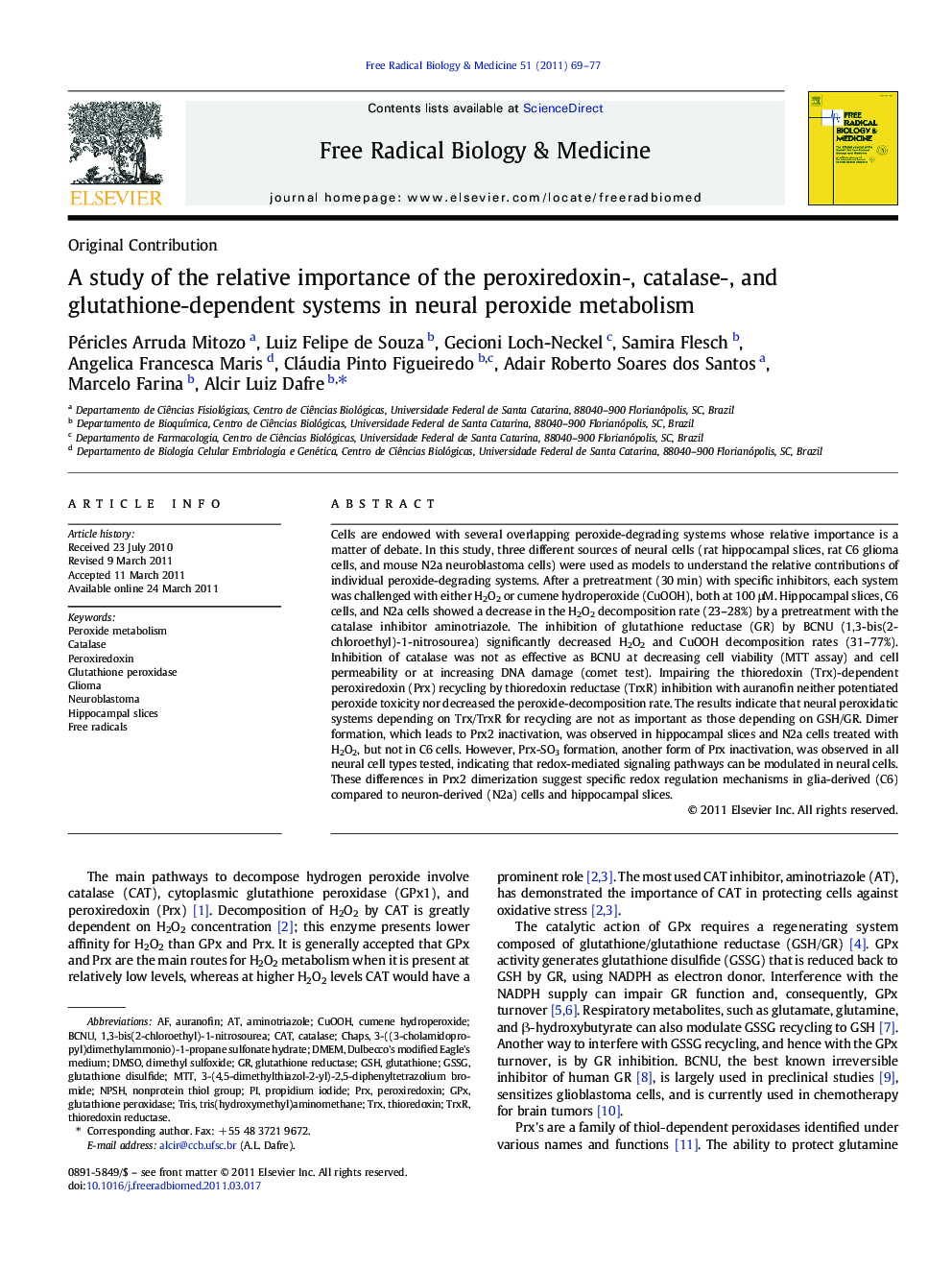| کد مقاله | کد نشریه | سال انتشار | مقاله انگلیسی | نسخه تمام متن |
|---|---|---|---|---|
| 10738532 | 1046714 | 2011 | 9 صفحه PDF | دانلود رایگان |
عنوان انگلیسی مقاله ISI
A study of the relative importance of the peroxiredoxin-, catalase-, and glutathione-dependent systems in neural peroxide metabolism
دانلود مقاله + سفارش ترجمه
دانلود مقاله ISI انگلیسی
رایگان برای ایرانیان
کلمات کلیدی
DMEMCuOOHNPSHBCNUGSSGGSHCAT1,3-bis(2-chloroethyl)-1-nitrosourea - 1،3-بیست (2-کلروتیل) -1-نیتروسورا3-(4,5-dimethylthiazol-2-yl)-2,5-diphenyltetrazolium bromide - 3- (4،5-dimethylthiazol-2-yl) -2،5-difenyltetrazolium bromideDMSO - DMSODulbecco's modified Eagle's medium - Medal of Eagle اصلاح شده DulbeccoMTT - MTTAuranofin - آرونوفینAminotriazole - آمینوترازولDimethyl sulfoxide - دیمتیل سولفواکسیدcumene hydroperoxide - هیدروپراکسید کومنCHAPS - چاپسCatalase - کاتالازGlutathione - گلوتاتیونglutathione disulfide - گلوتاتیون دی سولفیدglutathione reductase - گلوتاتیون ردوکتاز
موضوعات مرتبط
علوم زیستی و بیوفناوری
بیوشیمی، ژنتیک و زیست شناسی مولکولی
سالمندی
پیش نمایش صفحه اول مقاله

چکیده انگلیسی
Cells are endowed with several overlapping peroxide-degrading systems whose relative importance is a matter of debate. In this study, three different sources of neural cells (rat hippocampal slices, rat C6 glioma cells, and mouse N2a neuroblastoma cells) were used as models to understand the relative contributions of individual peroxide-degrading systems. After a pretreatment (30 min) with specific inhibitors, each system was challenged with either H2O2 or cumene hydroperoxide (CuOOH), both at 100 μM. Hippocampal slices, C6 cells, and N2a cells showed a decrease in the H2O2 decomposition rate (23-28%) by a pretreatment with the catalase inhibitor aminotriazole. The inhibition of glutathione reductase (GR) by BCNU (1,3-bis(2-chloroethyl)-1-nitrosourea) significantly decreased H2O2 and CuOOH decomposition rates (31-77%). Inhibition of catalase was not as effective as BCNU at decreasing cell viability (MTT assay) and cell permeability or at increasing DNA damage (comet test). Impairing the thioredoxin (Trx)-dependent peroxiredoxin (Prx) recycling by thioredoxin reductase (TrxR) inhibition with auranofin neither potentiated peroxide toxicity nor decreased the peroxide-decomposition rate. The results indicate that neural peroxidatic systems depending on Trx/TrxR for recycling are not as important as those depending on GSH/GR. Dimer formation, which leads to Prx2 inactivation, was observed in hippocampal slices and N2a cells treated with H2O2, but not in C6 cells. However, Prx-SO3 formation, another form of Prx inactivation, was observed in all neural cell types tested, indicating that redox-mediated signaling pathways can be modulated in neural cells. These differences in Prx2 dimerization suggest specific redox regulation mechanisms in glia-derived (C6) compared to neuron-derived (N2a) cells and hippocampal slices.
ناشر
Database: Elsevier - ScienceDirect (ساینس دایرکت)
Journal: Free Radical Biology and Medicine - Volume 51, Issue 1, 1 July 2011, Pages 69-77
Journal: Free Radical Biology and Medicine - Volume 51, Issue 1, 1 July 2011, Pages 69-77
نویسندگان
Péricles Arruda Mitozo, Luiz Felipe de Souza, Gecioni Loch-Neckel, Samira Flesch, Angelica Francesca Maris, Cláudia Pinto Figueiredo, Adair Roberto Soares dos Santos, Marcelo Farina, Alcir Luiz Dafre,